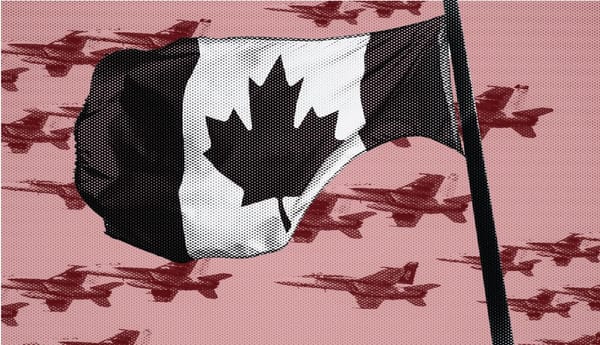On Tuesday, the office of the Auditor General of Canada released a report examining Canada’s pandemic emergency benefits. It found that billions of dollars should be extracted from lower-income Canadians who had initially received benefits.
The two highest-profile programs, the Canada Emergency Response Benefit (CERB) and the Canada Emergency Wage Subsidy (CEWS), were designed in March 2020 and intended to keep some Canadians afloat while parts of the economy shut down (though not all, of course, as in the background, most massive congregant workplaces continued to chug along).
CERB was intended to replace a rush of applications to Employment Insurance (EI) from workers who had been laid off as a result of the pandemic (though not those who quit), and CEWS replaced an earlier corporate benefit package intended to subsidize the wages of workers for corporations who saw a drop in revenues. CEWS and CERB ended up costing $175.5 billion combined. To put that into perspective, total health spending in Canada in 2022 is expected to reach $331 billion.
The memories might be hazy, but surely you’ll recall Prime Minister Justin Trudeau’s daily outdoor press conferences, where he assured Canadians that he’d give them the support they needed. His affirmation usually sounded something like this: “No matter who you are or what you do, this is a time where you should be focused on your health, and that of your neighbours, not whether you’re going to lose your job, not whether you’re going to run out of money for things like groceries and medication.” That was Trudeau speaking on March 18, 2020, when the first round of aid packages had been announced.
At that time, if you were a worker who was laid off, you were instructed to apply for aid through EI. Then, when CERB came into force, you were bounced from EI to CERB without needing to do anything. If you hadn’t applied for EI, you could apply to CERB directly. Around 8.5 million people received the CERB, at a total cost of $74.8 billion. Of that sum, the report calculated that $13.4 billion was either improperly paid or needed to be investigated further. This calculation included about 1.8 million people who did receive, or may have received, extra CERB payments because they’d applied for EI when instructed to do so.
CERB was never supposed to be a means of support for the lowest-income Canadians. In fact, those who didn’t earn more than $5,000 in either 2019 or in the 12 months prior to their application weren’t eligible for any income support at all. The report found that more than 560,000 people who applied for CERB either did or may have made less than the required amount of income, which would amount to a total of $5.2 billion in ineligible payments.
The cruelty of CERB claw backs stands in stark contrast with how lax the rules and enforcement was for CEWS. As a program that provided aid to individuals’ employers, it tethered workers to their jobs or else they’d risk finding themselves with no financial help during the pandemic.
CEWS was a boon for corporate Canada. Nearly all CEWS applications were initially approved (99.8 per cent), and the program paid out more than $100.7 billion to more than 440,000 employers to keep their employees on payroll.
While the vast majority of approved employers had fewer than 100 employees, more than 38 per cent of the total payout sum went to corporations with 100 or more employees. Twenty-four corporations, with more than 5,000 employees each, got $2.4 billion alone. More than 3,500 employers (fewer than 1 per cent of those who received the CEWS) were audited, and at least 298 employers were found to have filed improperly. Just $77 million was found to be owed back to the program through these audits, and the report couldn’t confirm if any money has been repaid at all. The report also estimates there was potentially $15.5 billion paid through CEWS to corporations who didn’t demonstrate that they had had a sufficient drop in revenue to be eligible for the program, and states that more needs to be done to investigate this.
I was a recipient of both programs, in different capacities: I accessed CERB for the month that I was laid off at the start of the pandemic, and then I managed CEWS funding for the organization I work at for the rest of 2020. For employers, it was easy: we just had to attest that our numbers were true. For individuals, even though mistakes were most often made by the government, we’ve been expected to pay back large sums of money, regardless of whether or not we can.
In my book Spin Doctors: How Media And Politicians Misdiagnosed The COVID-19 Pandemic, I wrote about how Nunavut Tunngavik Inc. (NTI), an organization which “ensures that promises made under the Nunavut Agreement are carried out,” formally called on the federal government to cease CERB collections. An article in Nunatsiaq News reported that the “NTI asserts that many Nunavummiut thought it was a universal benefit and applied in good faith: ‘there was confusion and misunderstanding regarding CERB eligibility among Inuit’ the resolution said. Inuit living in extreme poverty are not in a position to repay, the resolution said, so NTI calls ‘on governments of Canada and Nunavut to address high risk of COVID-19’ instead.”
Of course, there was little forgiveness for CERB recipients. The poorest people were left with less than they had before, and the richest corporations had little problem accessing the programs, even if they posted profits. For example, despite Rogers’ making a net income of more than $1.5 billion in 2020 alone, they still managed to finagle themselves into being eligible for CEWS.
The Auditor General’s report found that while they could drill into CERB data and understand how many recipients there were, who they are and where they were located, they were missing data from CEWS to know things as basic as how many employees benefited from the program. And where the Auditor General could point to increased revenues that CERB delivered to Canadians, the report noted that “it was difficult to assess the impact of the program and how effectively the program met its objectives because of the limited information employers were required to provide upon application.”
CERB and CEWS are a perfect allegory for modern Canadian society: the poorest get no help from the government while the largest corporations receive the most significant sums of money with very little oversight. Of course, this wasn’t by accident — it was by design.
The massive cash transfer from the public purse into the private coffers of hundreds of thousands of corporate entities in this country remains the most expensive swindle of the pandemic, so far.







